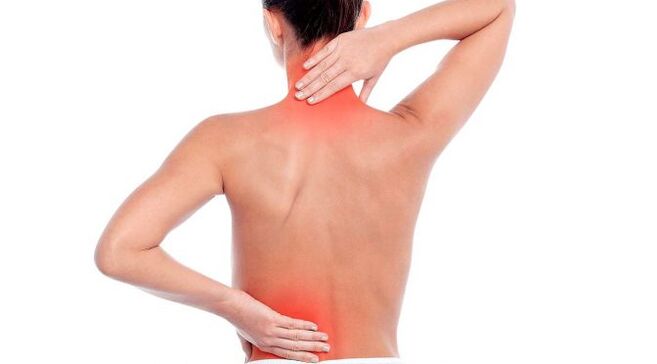In the 18th century, osteochondrosis was treated with hot mustard baths. There are many more treatments now, from warming ointments to surgery.

Osteochondrosis is a disease that affects more and more young people. The wrong way of life leads to this - little movement, constant sitting position, obesity, etc. In the past, people aged 45 and over suffered from osteochondrosis, today it is often diagnosed in 30 year olds.
What is osteochondrosis?
With osteochondrosis, degenerative damage to the intervertebral discs occurs. If left untreated, the intervertebral disc will collapse over time, grow with bone tissue, and the spine will lose mobility. In addition, with degenerative changes in the intervertebral disc, the contents of the nucleus flow out and form an intervertebral hernia. Disc protrusion and hernia cause severe pain that must be stopped with novocaine.
The contents emerging from the intervertebral disc affect the nerve endings of the spine and compress them. This disrupts the work of all internal organs. With cervical osteochondrosis, the blood supply to the brain deteriorates, severe migraines occur, and eyesight subsides. With lumbosacral, the legs suffer - they become numb and swell, joints and bones are destroyed, a heel spur can appear. In severe cases, paralysis occurs. Osteochondrosis of the chest region causes diseases of the stomach and heart. In some cases, a person will develop osteochondrosis of multiple parts of the spine that requires immediate treatment.
Treatment of osteochondrosis
First of all, if the disease worsens, it is necessary to relieve the pain. If analgesics do not help, novocaine must be injected. The next step is to unload the spine. The first 4-6 days with osteochondrosis exacerbation require bed rest.
The main stages of osteochondrosis treatment are as follows:
- Provide the patient with bed rest to relieve the spine.
- Eliminate pain with analgesics - tramadol, nefopam, etc.
- Eliminate inflammation with NSAIDs - diclofenac, ketoprofen, piroxicam, meloxicam, etc.
- If the pain is severe and persistent, an injection of novocaine or glucocorticoid should be given. These drugs work to relax the muscles for a long time, resulting in less pain.
- If osteochondrosis pain interferes with sleep, you must take sleeping pills.
- If hypertonicity of the back muscles is detected, muscle relaxants are prescribed.
- Diuretics are used to relieve spinal edema.
- After relieving acute pain, anti-inflammatory ointments and gels can be used. The products contain not only anti-inflammatory and analgesic components, but also collagen hydrolyzate. Collagen hydrolyzate restores the damaged tissue of the intervertebral disc and helps get rid of osteochondrosis.
- To restore blood supply to the spine, angioprotective drugs and venotonics are prescribed, which clear clogging of the bloodstream, as well as nicotinic acid, which is a vasodilator.
- In advanced cases of osteochondrosis with paralysis, only surgery will help.
In addition to all of the above, the following are effective in treating osteochondrosis:
- physiotherapy;
- acupuncture;
- mud therapy;
- baths.
Particular attention should be paid to gymnastics for osteochondrosis. It's gymnastics that helps strengthen the back muscles that support the spine. With the help of exercises, you can cure osteochondrosis if you start doing it on time.






























